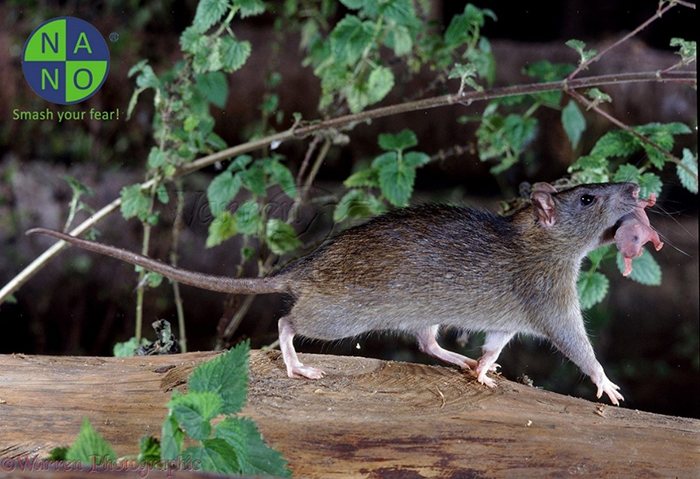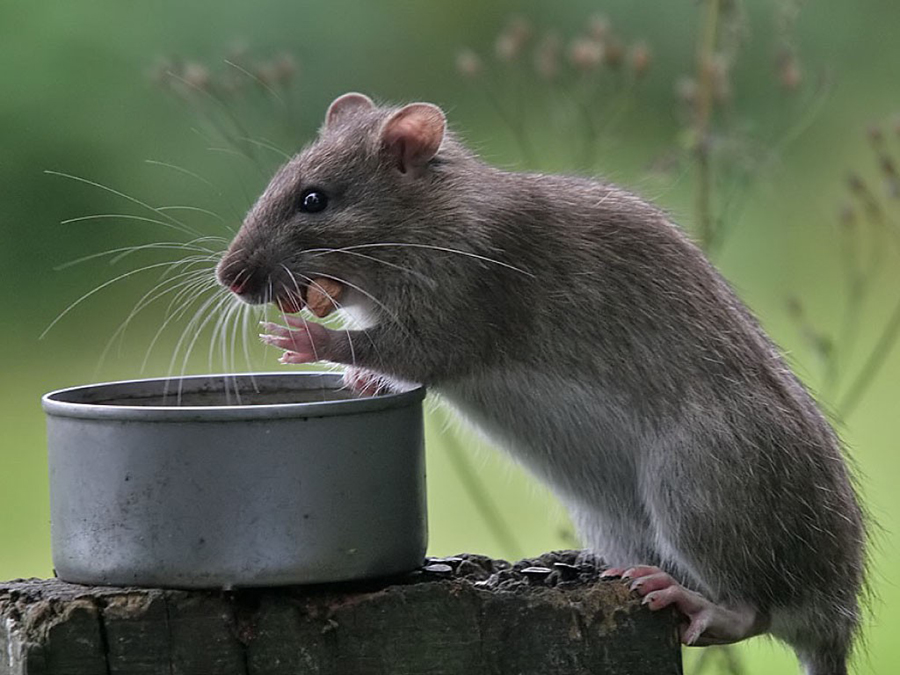Roof rat
Facts, Identification & Control
Latin name: Rattus rattus
Roof rats known as ship rats, black rats, Alexandrine rats and other names are popular long tail rodents of genus Rattus. Because house mice belong to genus Mus, roof rats are different from house mice. Read more: Distinguishing features between Rats and Mouse.
Overview

Black or brown, can be over 40 cm with a long tail, big ears and eyes, a pointed nose. Body is smaller and sleeker than brown rats. Fur is smooth.
Activities, diet and habit
They usually nest under buildings, trashes or woods. They are excellent climber because of the structure of their front legs. Roof rats are very adaptable. They prefer living in high places but they can also live in different environments. They are nocturnal and accomplished climbers. As their name “roof rats”. They can be found in high places such as trees, collar roofs, attics and roofs. If necessary, they can nest in the roof.
In dense population, they will establish a social hierarchy in which strong males will have more advantaged in mating than weak males.
Roof rats like eating fruit (sometimes they are called “fruit rats” or “lemon rats”) and seeds. However, they are omnivorous and will eat almost anything available for them.
They are famous for consume tree barks, meat and cereal. They commonly store food, seeds and nuts.

Reproduction
They reach sexual mature between 2 and 5 months. They produce 4 – 6 litter per year with 6 – 8 pups per litter. Roof rat lifespan can be up to a year. They are prodigious breeders. Female can breed year – round. In a year, a female can produce 40 new rodents.
Signs of Roof rat’s infestation
When you see live or dead rodents, it means that they are active. In those places where have many roof rats usually have other rodents. Dropping is a sign for their activity. Roof rat dropping is 12–13 mm in length with pointed ends whereas brown rat dropping is about 18 – 20 mm and capsule shape. Other indicators include grease marks on the surface which is near their nest. Greasy marks are created by rodents during their moving and the oil in their fur.
More information
Roof rats can be carriers of many diseases. They can transmit diseases thorough physical contact, bites, contamination or fleas that are feeding on the rodent.
Historically, infected fleas have transmitted serious plagues from rats to human. Bubonic plague was a disaster in Europe. Currently, this disease continues spreading in America and all over the world. Trichinosis may be contracted through eating undercooked meat of animals that have fed on rats.


